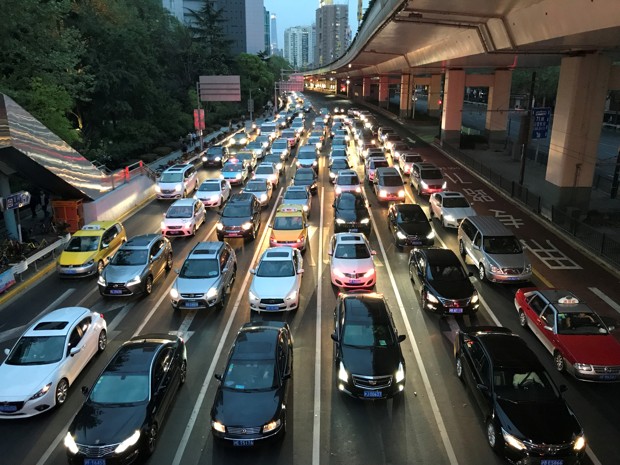Desire to Drive: How Wider Highways Become Slower
In lecture, we’ve discussed the implications of Braess’s paradox: how increasing the number of roads to an existing road network can end up slowing down the traffic that flows through it. That result can be explained by, as with most societal problems, human greed. Each driver choosing what they believe to be the fastest path causes more traffic for others. But what happens when the choice is not between two different paths, but rather two different transportation modes?
In this article by CityLab, writer Benjamin Schneider reports on the 2011 expansion of the Katy Freeway in the Houston metro, which is the current widest freeway in North America at 26 lanes. The expansion led to a very unexpected outcome: travel times increased 30-55% from before new lanes were added. Intuitively, more lanes would equal increased “bandwidth” for cars to pass through, disregarding losses from obsessive cut off-ers. Thinking back to graph theory, imagine reducing the weight of an edge on a graph. However, the exact opposite was true, much to the chagrin of city planners.
Unlike Braess’s paradox, which involves increasing the number of roads for a set number of drivers, this phenomenon of induced demand involves a set of commuters – not specifically drivers. Commuters can drive in and out of Houston, or they can utilize one of a few alternatives: public transportation, travelling during off-hours, or simply not commuting at all. However, the well-publicized lane additions to the Katy Freeway encouraged more people to drive in and out of Houston. The amount of new drivers in turn surpassed the amount of increased traffic that the lanes could accommodate. One salient metaphor from the article: “Rather than thinking of traffic as a liquid, which requires a certain volume of space to pass through at a given rate, induced demand demonstrates that traffic is more like a gas, expanding to fill up all the space it is allowed.”
We can relate this to game theory and Nash equilibrium, as each self-interested commuter will want to do what is best for their commute. When they see that there is a better, more pleasant option in driving through the wider freeway, they choose to take it. Eventually, every commuter is taking the route that they think is the best, but the average commute time has increased to the point where the gains of the extra lanes are nullified. Public transportation ends up being utilized less as well, leading to increased carbon emissions overall. But if commuters had stuck to their old habits, then the increased “bandwidth” would have significantly improved the average travel times.
How could this have been avoided? The answer is simple: the freeway should have never been expanded. Adding infrastructure doesn’t always lead to quality of life improvements, but other, more nuanced solutions tend to result in better outcomes. Initiatives promoting transportation, flexible work hours, carpool incentives; all of those would have been more effective than the lane additions to the Katy Freeway.

